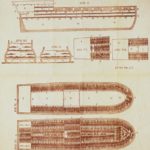From the colonial era, relations between European settlers and Native American nations have been complicated. In 1803 Congress authorized and funded an expedition led by Meriwether Lewis and William Clark for exploration of the region and for better knowledge about American Indians of the Northwest in order to develop trade. About 30 years later, the United States forced the removal of Native Americans from their lands to make way for white American settlement. Congress and the president made treaties with Native American nations, but those treaties were not always respected as the United States continued to expand into the west. After Native Americans enlisted and served in both World War I and World War II, Congress passed legislation to begin to address longstanding Native Americans claims against the United States Government.
Understanding Contracts
In this lesson, students are asked which of two chocolate bars – one with nuts, one without – they prefer. A single representative is taken from each preference group. These representatives are given the chocolate bar that they prefer less, motivating a contractual trade. One student unknowingly has an empty wrapper, eliciting debate after the trade is completed. The class concludes by discussing possible equitable solutions.
The History of Memorial Day
The Slave Trade and the Constitution

This short video examines changing attitudes towards the slave trade in the late 18th century. As early as 1763, there were strong voices in favor of the abolition of international slave trading. At the Constitutional Convention, states from the Deep South refused to support the Constitution without some protection for the slave trade. Professor John Kaminksi describes the convention’s decision to allow congressional action on slavery after 1808 as “the beginning of the end.”
Women & the American Story: Confidence and Crises, 1920-1948
This free curriculum unit from the New-York Historical Society considers what it meant to be American in the decades following World War I. Materials focus on the tensions caused by the social, economic, and political shifts of the era and how women took action on a broad array of issues.
House and Senate: What’s the Difference?
The United States Congress consists of two legislative bodies, the House of Representatives and the Senate. There are many similarities between these institutions. Representatives and Senators are directly elected by the public (see Capitol Visitor Center essay “Who Elects Our Senators?”). Passing legislation requires the agreement of both the House and Senate. There are chambers for both in the U.S. Capitol. Given these commonalities, are there really differences between the House and Senate?
Guide to the State Statues in the National Statuary Hall Collection
The National Statuary Hall Collection in the United States Capitol is composed of statues donated by individual states to honor persons notable in their history. The entire collection now consists of 100 statues contributed by 50 states. All 50 states have contributed two statues each. Thirty-five statues are displayed in National Statuary Hall while others have been placed in other parts of the Capitol including the Crypt, the Hall of Columns, and the Capitol Visitor Center.
Voting Rights
The right of a citizen to vote is not directly protected in the Constitution, and throughout our history that right has often been granted to some, but denied to others. However, through various amendments to the Constitution, the right to vote has become more and more inclusive. Uncover the battle for voting rights in the National Constitution Center’s learning module.
Separation of Powers
Instead of placing authority in the hands of one person, like a king, or even a small group of people, the U.S. Constitution divides power. Power is first divided between the national, or federal government, and the state and local government under a system known as Federalism. At the federal level, the Constitution again divides power between the three major branches of our federal government: the legislative, the executive, and the judicial. Discover the battles of the branches in the National Constitution Center’s learning module.
Founding Documents
Discover the documents at the bedrock of our nation’s founding and understand the fundamental ideas from each of the documents, and the major principles of the U.S. Constitution. Primary sources include the Declaration of Independence, Articles of the Confederation, the Constitution and the Bill of Rights, Federalist papers (#51, #70, #78), Brutus #1, and the amazing Letter from the Birmingham City Jail. Check out the National Constitution Center’s learning module for more resources!
